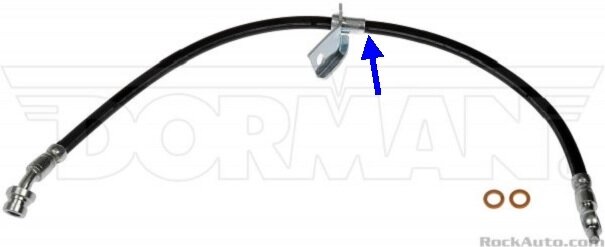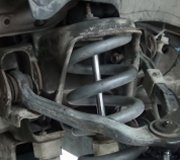You're on the wrong track. Hi guys; I had to stick my nose in here before you waste your money and time. Do as Jacobandnickolas described to check if the brakes are locked up. You're right that it's the brakes that are generating the heat, but that's what they're supposed to do. When it's excessive like you're finding, it's because they're staying applied while you're driving.
I agree this has to be diagnosed while the brakes are hot, and the problem is occurring. When it does act up, stop on a slight incline, shift to neutral, release the brakes, and see if the car creeps downhill on its own. If it does not, place a block about a foot downhill from a tire, (so you don't look funny chasing after the car), then use a line wrench, (flare-nut wrench), to loosen the steel lines at the master cylinder. Hope the brakes don't release when you do that. If they do, there's two possible causes. The least expensive cause is the brake light switch is out of adjustment and is holding the brake pedal down a little. That will move the rubber lip seals in the master cylinder past the fluid return ports, blocking them. That keeps the brakes applied and they generate excessive heat. That heat migrates into the brake fluid in the calipers causing it to expand and apply the brakes even harder. On many car models you can identify that by pulling the brake pedal up with your foot.
My bigger fear is the brake fluid is contaminated with a petroleum product, including engine oil, transmission fluid, power steering fluid, axle grease, or penetrating oil. That will cause the rubber parts to swell, including those lip seals in the master cylinder. They grow past the fluid return ports, blocking them, same as if the brake light switch was holding the brake pedal down a little. The only proper repair for contaminated brake fluid is to remove every part that contains rubber parts, flush and dry the steel lines, then install all new rubber parts at the same time. If any rubber part is not replaced, the contamination will leach out of it and recontaminate the new fluid. This is where blindly replacing the calipers is the wrong approach until we know the fluid is okay. The first clue is the rubber bladder seal under the reservoir's cap will be blown up and mushy, and you usually won't be able to pop it back in place. This repair requires replacing the calipers, rear calipers or wheel cylinders, rubber flex hoses, master cylinder, combination valve assembly, and when used, the rear height-sensing proportioning valve, (that's mainly a minivan and pickup truck thing). That also includes the hydraulic controller if the car has anti-lock brakes, as it has rubber o-rings in it and chambers where the old brake fluid can't be fully removed.
I'm hopeful the brake light switch takes care of this, especially since both wheels are involved. When only one front brake acts up first, the rubber flex hose is the better suspect. It's shown in this photo. Any time there's a bracket crimped around the middle of the hose, (blue arrow), it's not uncommon for rust to build up in there until it constricts the hose. You can push brake fluid through that restriction with your foot, but then the fluid becomes trapped and can't release back up to the reservoir. When this happens, the brake will not release when loosening the steel lines at the master cylinder. Now you have to crawl underneath and open the caliper's bleeder screw on the wheel that's getting hot. If both are getting hot, you'll need to open the bleeder screws on both front wheels. Remember to have that block in place by a tire so the car doesn't try to leave you or run you over. You can also do this with the wheel and tire removed.
The other clinker to your planning on replacing calipers is you actually could cause the problem to go away, possibly only for a little while, but we want to know the real cause of this problem first. Years ago it was fairly common for crud and debris to build up inside the calipers behind the pistons. That wasn't a problem until you shoved the pistons back in to make room for a new set of pads. Doing so runs the pistons over that debris which acts like a wedge. When you apply the brakes, the fluid pushes the pistons out just a little, then, when you release the pedal that debris holds the pistons from releasing. A similar problem occurs when a ring of rust develops around the piston. The pistons slide through a "square-cut seal" that bends, or deforms slightly. When you release the brake pedal, that seal wants to straighten out. That is what retracts the piston a few thousandths of an inch to release the pads. When installing new, thicker pads, you have to push the piston all the way back in. That runs the ring of rust under the square-cut seal and prevents it from releasing the piston.
Both of these problems only show up after someone popped in a new set of pads. That is a sign of a do-it-yourselfer, not a professional. At the very least, if that is what is going to be done, use a large flat-blade screwdriver to gently pry the piston back to its fully retracted position before unbolting or removing the caliper. You should be able to do that with one hand. If you have to remove the caliper, then use a c-clamp to force the piston in, as many people think is the normal procedure, you have a sticking piston. You should never have to resort to using that much pressure. If you do, that caliper is never going to release on its own. As far back as the late '80s it was standard practice with a professional brake job to disassemble calipers and rebuild them. Today professionally rebuilt calipers with a warranty are so inexpensive, rebuilding them only makes sense when only rebuild kits are available, and you know how to do it.
Thanks for letting me add my few comments of value. Hope this gets figured out soon.
Update: I type so slowly that I missed your last few replies. My words of wisdom go back to when you brought up replacing your calipers. Don't start with the expensive stuff first. Throwing random parts at a problem is the most expensive and least effective way to diagnose the cause, plus it introduces a whole bunch of new variables that can compound the problem.
Also, I forgot to mention the calipers have to slide back and forth freely on chrome-plated pins Those should be lubed with special high-temperature brake grease, but only if the chrome plating is in good condition. If the chrome has lifted anywhere, there's spots of rust under it that will cause the caliper to stick. The piston will still release, but the outer pad will drag against the rotor. The pins must be replaced if you find that.
Some of these causes are age-related. Your car isn't really old enough to suspect some of the things I described. Jacobandnickolas will guide you through the proper diagnosis, so you don't waste your time or money.
Image (Click to make bigger)
Tuesday, October 25th, 2022 AT 7:04 PM




